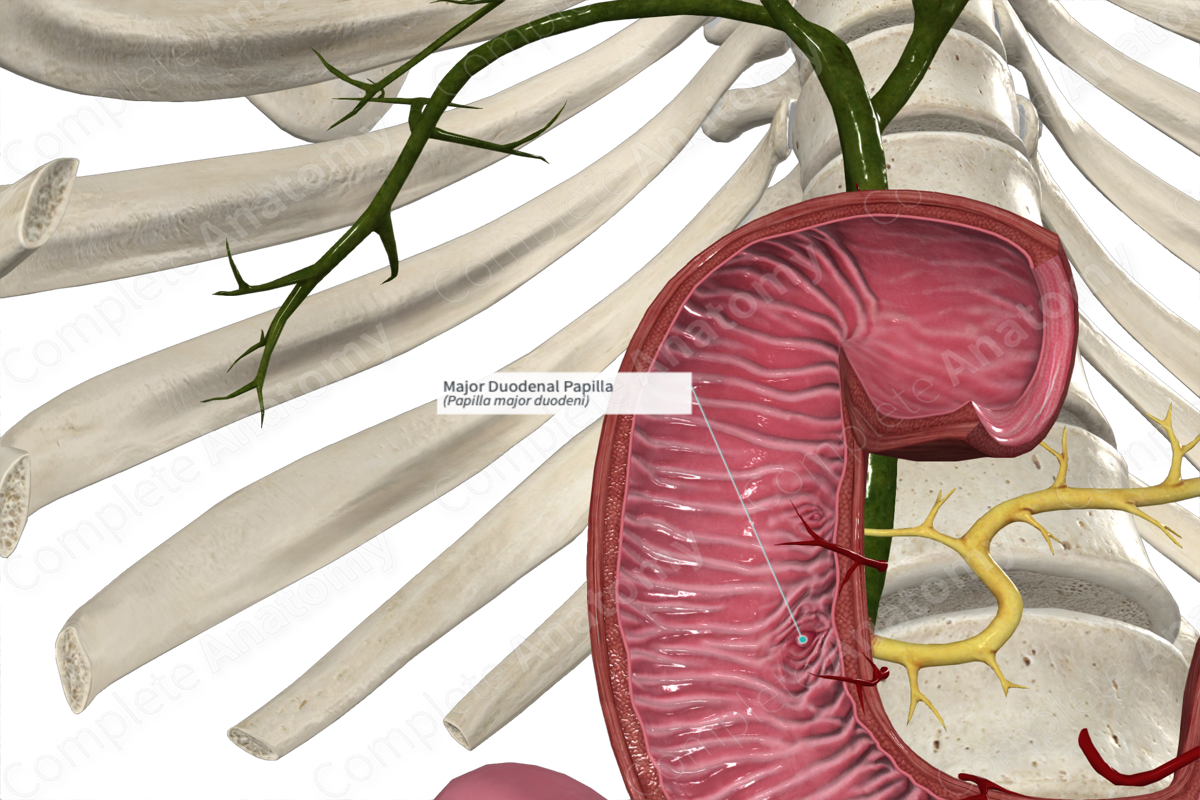
Structure/Morphology
The major duodenal papilla is a raised circular nipple-like structure on the inner surface of the descending duodenum. This bulge is formed by the underlying hepatopancreatic ampulla (of Vater) and its muscular sphincter. The protrusion of these slightly into the duodenum pushes the mucosa and submucosal layers of the duodenal wall inwards.
Related parts of the anatomy
Key Features/Anatomical Relations
The major duodenal papilla is a raised orifice on the inner surface of the descending duodenum. It's located roughly midway down the descending duodenum and marks the boundary between the foregut above and the midgut below.
The major duodenal papilla marks the site where the hepatopancreatic ampulla (of Vater) sits. This in turn is the site into which the bile and main pancreatic ducts empty their contents, before being ejected through the major duodenal papilla and into the duodenum (Standring, 2016).
Function
The major duodenal papilla is the site at which bile and pancreatic juices are released from the hepatopancreatic ampulla into the descending duodenum.
References
Standring, S. (2016) Gray's Anatomy: The Anatomical Basis of Clinical Practice. Gray's Anatomy Series 41 edn.: Elsevier Limited.
Learn more about this topic from other Elsevier products
Major Duodenal Papilla

The major duodenal papilla is the location of the duct where the bile and pancreatic juice empty into the duodenum via the ampulla of Vater.

